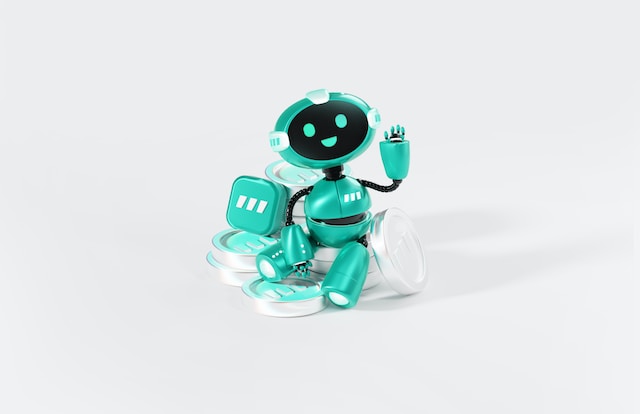Welcome to the fascinating world of an artificial intelligence robot, where cutting-edge technology and human-like capabilities merge to transform industries and reshape the way we live and work. We will look into the realm of AI robots, exploring their applications across healthcare, manufacturing, customer service, education, and entertainment. Discover the advantages they offer, the challenges they pose, and the ethical considerations surrounding their use. Get ready to embark on a journey that unveils the potential of AI robots and the exciting future that awaits us.
Table of Contents
- Introduction: Understanding Artificial Intelligence (H1)
- The Rise of Robots (H2)
- 2.1 A Brief History of Robotics (H3)
- 2.2 The Emergence of Artificial Intelligence (H3)
- How Artificial Intelligence Robots Work (H2)
- 3.1 Machine Learning and Neural Networks (H3)
- 3.2 Natural Language Processing (H3)
- 3.3 Computer Vision (H3)
- 3.4 Robotics and Automation (H3)
- Applications of Artificial Intelligence Robots (H2)
- 4.1 Healthcare and Medicine (H3)
- 4.2 Manufacturing and Industrial Automation (H3)
- 4.3 Customer Service and Support (H3)
- 4.4 Education and Research (H3)
- 4.5 Entertainment and Gaming (H3)
- Advantages and Challenges of Artificial Intelligence Robots (H2)
- 5.1 Advantages of AI Robots (H3)
- 5.2 Ethical and Legal Considerations (H3)
- 5.3 Impact on Employment (H3)
- The Future of Artificial Intelligence Robots (H2)
- Conclusion (H2)
- FAQs (H2)
- 8.1 What is an artificial intelligence robot? (H3)
- 8.2 How do artificial intelligence robots learn? (H3)
- 8.3 Can artificial intelligence robots replace humans in the workforce? (H3)
- 8.4 What are the ethical implications of using AI robots? (H3)
- 8.5 Will AI robots become more advanced in the future? (H3)
Introduction: Understanding Artificial Intelligence
Artificial Intelligence (AI) has become a buzzword in recent years, and its impact on various industries is undeniable. One of the most intriguing aspects of AI is the development of intelligent robots that can perform tasks traditionally done by humans. These robots, known as artificial intelligence robots, have the potential to revolutionize multiple sectors, from healthcare to manufacturing and beyond. In this article, we will explore the world of artificial intelligence robots, their capabilities, applications, advantages, challenges, and what the future holds for these remarkable creations.
The Rise of Robots
A Brief History of Robotics
Robots have a long and fascinating history. The concept of machines that can imitate human actions dates back to ancient times, with early examples found in Greek mythology and ancient Chinese texts. However, it wasn’t until the 20th century that significant advancements in robotics were made. The first true robot, called “Unimate,” was introduced in the 1960s and was used for industrial automation. Since then, robots have evolved rapidly, with advancements in technology and the integration of artificial intelligence.
The Emergence of Artificial Intelligence
Artificial intelligence, often referred to as AI, is the field of computer science dedicated to creating intelligent machines capable of simulating human intelligence. The emergence of AI has opened up new possibilities for robots, enabling them to learn, adapt, and perform complex tasks autonomously. Machine learning, natural language processing, computer vision, and robotics form the core components that power AI robots, allowing them to interact with the world and make intelligent decisions.
How Artificial Intelligence Robots Work
Machine Learning and Neural Networks
Machine learning is a subset of AI that focuses on the development of algorithms and models that enable computers to learn and make predictions without explicit programming. Neural networks, inspired by the human brain, are the building blocks of machine learning algorithms. AI robots utilize machine learning techniques to analyze data, recognize patterns, and improve their performance over time.
Natural Language Processing
Natural Language Processing (NLP) enables AI robots to understand and interpret human language. Through NLP, robots can process speech, recognize voice commands, and engage in meaningful conversations. This capability opens up possibilities for applications in customer service, virtual assistants, and language translation.
Computer Vision
Computer vision allows AI robots to see and interpret visual information, similar to how humans perceive the world through their eyes. By analyzing images and videos, robots can recognize objects, detect motion, and even navigate through their environment. Computer vision finds applications in surveillance, autonomous vehicles, and quality control in manufacturing.
Robotics and Automation
The integration of AI with robotics enables the physical embodiment of intelligent machines. Robots equipped with AI capabilities can interact with the physical world, manipulate objects, and perform tasks with precision and accuracy. They can be programmed to carry out repetitive tasks in manufacturing, assist in surgical procedures, or provide support in hazardous environments.
Applications of Artificial Intelligence Robots
Healthcare and Medicine
AI robots are making significant contributions to the healthcare industry. They can assist in surgeries, analyze medical images for diagnosis, and provide personalized care to patients. These robots can work alongside medical professionals, enhancing efficiency, and improving patient outcomes.
Manufacturing and Industrial Automation
In manufacturing, AI robots are transforming production processes. They can automate repetitive tasks, monitor quality control, and optimize manufacturing operations. By increasing productivity and reducing human error, AI robots are revolutionizing the industry.
Customer Service and Support
AI robots are increasingly being used in customer service roles. They can handle inquiries, provide information, and assist customers with their needs. Through natural language processing and machine learning, these robots can understand customer intent and deliver personalized experiences.
Education and Research
AI robots have the potential to revolutionize education and research. They can act as interactive tutors, adapt to individual learning styles, and provide personalized feedback to students. Robots can assist scientists in data analysis, simulations, and complex experiments in research.
Entertainment and Gaming
AI robots are also making their way into the entertainment industry. They can be programmed to perform in theatrical shows, interact with audiences, and even participate in gaming experiences. These robots add a new dimension to entertainment, blurring the line between fiction and reality.
Advantages and Challenges of Artificial Intelligence Robots
Advantages of AI Robots
AI robots offer numerous advantages. They can perform tasks with precision and accuracy, reducing the margin of error. They can work tirelessly without fatigue, increasing productivity. Additionally, they can undertake dangerous or physically demanding tasks, ensuring the safety of humans. AI robots have the potential to augment human capabilities, leading to improved efficiency and enhanced outcomes.
Ethical and Legal Considerations
The rise of AI robots also raises ethical and legal considerations. Questions about privacy, data security, and the responsibility of AI robots in decision-making processes need to be addressed. The development and deployment of AI robots must be accompanied by robust frameworks that ensure transparency, accountability, and adherence to ethical guidelines.
Impact on Employment
The increasing use of AI robots has sparked concerns about job displacement. While AI robots can automate certain tasks, they also create new job opportunities. The workforce of the future will likely involve collaboration between humans and AI robots, with humans focusing on tasks that require creativity, critical thinking, and emotional intelligence.
The Future of Artificial Intelligence Robots
The future of artificial intelligence robots is promising. As technology advances, AI robots will become even more sophisticated and capable. They will possess advanced learning capabilities, enabling them to adapt and improve in real time. Additionally, AI robots will become more interactive and capable of understanding and responding to human emotions. This will open up new avenues for collaboration between humans and robots in various fields.
In the future, AI robots may become ubiquitous, seamlessly integrated into our daily lives. They will assist us in our homes, workplaces, and public spaces. From healthcare companions to personal assistants, AI robots will enhance our quality of life, making tasks easier, more efficient, and more enjoyable.
Conclusion
Artificial intelligence robots are revolutionizing the way we live, work, and interact with the world. Their integration of AI technologies enables them to learn, adapt, and perform tasks traditionally done by humans. With applications ranging from healthcare to manufacturing, AI robots offer numerous advantages, including increased productivity, improved efficiency, and enhanced safety. However, ethical considerations and the impact on employment must be carefully addressed as AI robots become more prevalent.
As we look to the future, the possibilities of AI robots are endless. Their continued development and integration will reshape industries and create new opportunities for collaboration between humans and intelligent machines. Embracing the potential of artificial intelligence robots will lead us into a future where innovation and automation work hand in hand.

